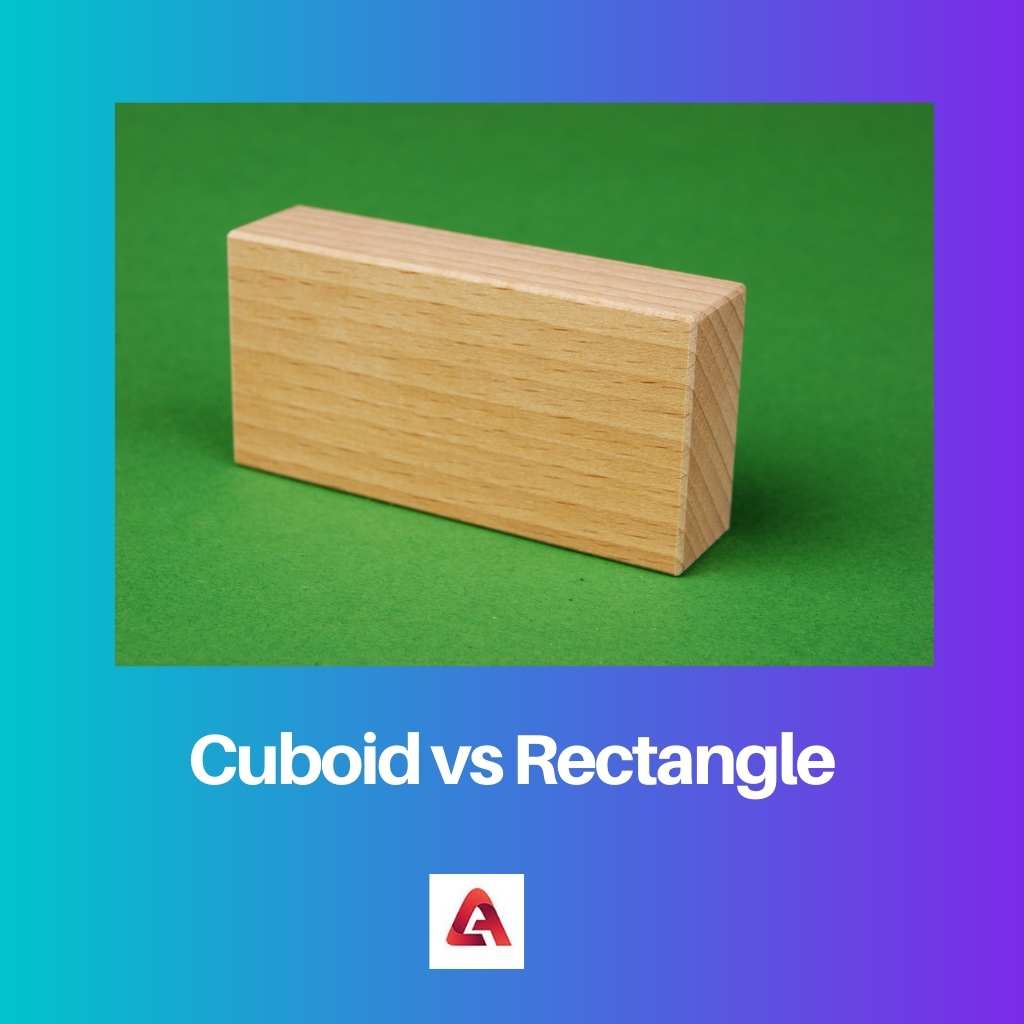Cue primary grade deja vu. Math has a bittersweet relationship with everyone on this planet. From being everyone’s favorite subject due to the lack of theory in the syllabus, it went to the subject that made everyone wonder about their brain capacities.
Cuboid and rectangle are shapes that feature in everyday objects that are misconstrued as each other.
Key Takeaways
- A cuboid is a three-dimensional geometric figure with six rectangular faces, while a rectangle is a two-dimensional figure with four straight sides and four right angles.
- Cuboids have properties such as volume and surface area, while rectangles have properties like area and perimeter.
- Both cuboids and rectangles are part of Euclidean geometry but differ in dimensionality and geometric properties.
Cuboid vs Rectangle
A cuboid is a three-dimensional geometric shape that has six rectangular faces, with all corners at 90-degree angles. A rectangle is a two-dimensional shape with four sides and four right angles, with opposite sides being equal in length.

A cuboid is a mathematical figure that consists of dimensions such as length, breadth, and height. This figure is a three-dimensional shape of a rectangle.
The cuboid consists of six faces, twelve sides, and eight vertices. The cuboid contains a shape similar to a rectangular box. Examples of cuboids in real-life could be a mattress, book, wardrobe, etc.
A rectangle is a mathematical figure that consists of length and breadth. This figure contains two dimensions, namely the length and the breadth.
This figure consists of four sides, with the opposite sides possessing a measure that is similar in length. All angles featured in this shape are right angles. Examples of rectangles in real-life could be tabletops, a page in a book, a field, etc.
Comparison Table
| Parameters of Comparison | Cuboid | Rectangle |
|---|---|---|
| Definition | A cuboid is a parallelepiped that is similar to a rectangular box. | It is defined as a quadrilateral with equal opposite sides. |
| Dimensions | A cuboid has three dimensions, length, breadth, and height. | All rectangles have two dimensions, length, and breadth. |
| Mensuration | The total surface area, volume, and lateral surface area. | The calculation of the perimeter and area of this figure is possible. |
| Etymology | The word cuboid is derived from the Greek word kuboeidēs. | The word rectangle originates from medieval and late Latin. |
| Faces | A cuboid has six faces. | A rectangle has no face due to its two-dimensional figure. |
What is a Cuboid?
The cuboid falls under a geometrical concept. It is a six-faced quadrilateral that comes under the family of a convex polyhedron.
The graph of this convex polyhedron is similar to the cube. This is because the cube is a cuboid with equal sides. All polyhedrons are considered to be cuboids according to the mathematical literature.
The cuboid is a geometrical figure in which each face is rectangular. The pair of adjacent faces are at right angles.
Cuboids are known by several different names, such as right cuboid, rectangular cuboid, rectangular prism, rectangular hexahedron, and rectangular parallelepiped.
A cuboid has several special features. The angles in a cuboid are right angles. The opposing faces have an equal measure.
Alternate names such as orthogonal parallelepiped rectangular parallelepiped are also used to define a rectangular cuboid.
The square cuboid or right square prism is the name given to the cuboid wherein the faces of at least two sides of the cuboid are square in shape.
The cuboid’s lateral and total surface area can be calculated by applying special geometrical formulas. Similarly, the volume can be identified by multiplying the three dimensions of the cuboid.
The cuboid is mostly symmetrical except for certain special cases. Examples of cuboids are books, boxes, cabinets, buildings, etc.

What is a Rectangle?
A rectangle is the basic two-dimensional figure that everyone’s been learning from second grade. And with each year, this figure has dimensions, perimeter, area, and other crucial elements added to it, forever rendering our image of the rectangle obsolete.
A square is a rectangle with equal sides. However, the opposite sides in a rectangle are equal in measure. The length and the breadth are the two dimensions of the rectangle.
The rectangle in the Euclidean plane geometry is used to refer to a right-angled quadrilateral. A rectangle is also equiangular.
This basically refers to all the angles present on this figure having an equal measure of ninety degrees.
The rectangle can be called a parallelogram with right angles, and when the sides are equal, it is called a square.
A non-square rectangle is termed an oblong. Rectangles are named in place of their edges to calculate the rectangle’s angle measure, area, perimeter, or diagonal measure.
The origin of the word rectangle is credited to Late and Medieval Latin. The word is derived from rectangulas. This is made up of two other words, “rectus” and anglus, which means right proper angle.
Rectangular calculations are used extensively in real-life situations.

Main Differences Between Cuboid and Rectangle
- While the cuboid is a classic three-dimensional figure, the rectangle is two-dimensional.
- The cuboid has six faces, eight vertices, and twelve edges. The rectangle has four sides.
- A parallelopiped with square faces is called a cuboid. A quadrilateral with equal opposite sides is known as a rectangle.
- There are three dimensions in a cuboid: length, breadth, and height. There are two dimensions called length and breadth in the rectangle.
- The Greek word kuboeidēs gave birth to the term cuboid. The rectangle is born from Latin words rectus and angulus.
- The cuboids found in our daily lives are phones, television, books, doors, etc. The land, paper, and other objects are examples of flat rectangles.

